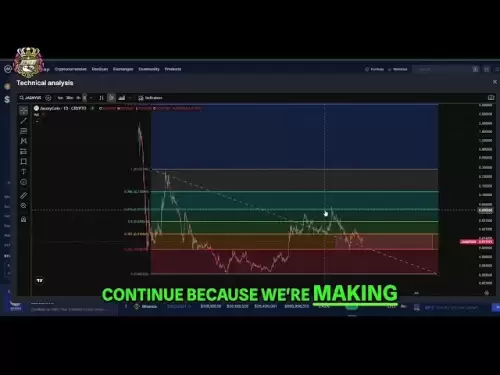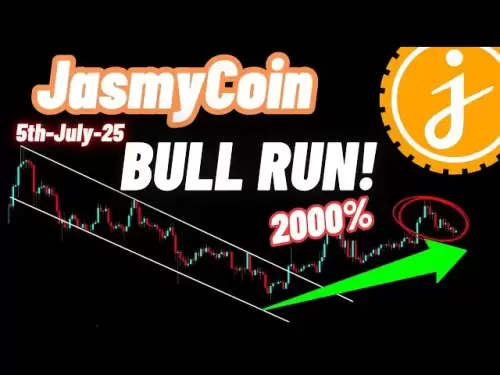-
 Bitcoin
Bitcoin $108,250.0992
0.11% -
 Ethereum
Ethereum $2,515.9404
0.03% -
 Tether USDt
Tether USDt $1.0003
0.00% -
 XRP
XRP $2.2166
-0.19% -
 BNB
BNB $656.5904
0.29% -
 Solana
Solana $147.4122
-0.58% -
 USDC
USDC $1.0000
-0.01% -
 TRON
TRON $0.2830
0.06% -
 Dogecoin
Dogecoin $0.1641
0.27% -
 Cardano
Cardano $0.5739
-0.19% -
 Hyperliquid
Hyperliquid $39.1463
-0.11% -
 Sui
Sui $2.8882
-0.02% -
 Bitcoin Cash
Bitcoin Cash $487.6428
0.31% -
 Chainlink
Chainlink $13.2097
0.07% -
 UNUS SED LEO
UNUS SED LEO $9.0308
0.10% -
 Avalanche
Avalanche $17.8608
0.13% -
 Stellar
Stellar $0.2379
-0.06% -
 Toncoin
Toncoin $2.7400
-0.39% -
 Shiba Inu
Shiba Inu $0.0...01144
-0.36% -
 Litecoin
Litecoin $87.5467
0.66% -
 Hedera
Hedera $0.1538
0.22% -
 Monero
Monero $315.5479
0.36% -
 Dai
Dai $1.0000
0.00% -
 Polkadot
Polkadot $3.3523
-0.71% -
 Ethena USDe
Ethena USDe $1.0003
0.01% -
 Bitget Token
Bitget Token $4.3960
-1.03% -
 Uniswap
Uniswap $7.2663
4.19% -
 Aave
Aave $272.8619
2.04% -
 Pepe
Pepe $0.0...09676
-0.18% -
 Pi
Pi $0.4586
-2.87%
How long does it take for Bitstamp's SEPA withdrawals?
Bitstamp's SEPA withdrawals typically take 3-5 business days: 1-2 days for Bitstamp to process and 1-3 days for your bank to handle the transfer.
Apr 27, 2025 at 08:07 pm
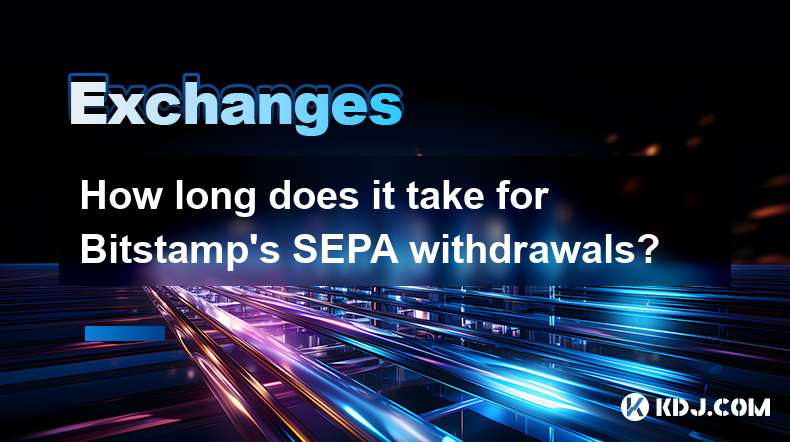
When it comes to managing your cryptocurrency and converting it into fiat currency, understanding the withdrawal process is crucial. Bitstamp, one of the oldest and most reputable cryptocurrency exchanges, offers SEPA (Single Euro Payments Area) withdrawals for its European users. If you're wondering how long it takes for Bitstamp's SEPA withdrawals, this article will provide a detailed explanation.
Understanding SEPA Withdrawals on Bitstamp
SEPA is a payment integration initiative that allows for efficient and low-cost euro transfers between banks within the European Union. Bitstamp leverages SEPA to facilitate withdrawals to your bank account. The process involves converting your cryptocurrency to euros and then transferring those euros to your bank account via SEPA.
Factors Affecting SEPA Withdrawal Times
Several factors can influence the time it takes for a SEPA withdrawal to reach your bank account. These include:
- Bitstamp's processing time: Bitstamp processes withdrawal requests during business hours, typically within 1-2 business days.
- Bank processing time: Once Bitstamp processes the withdrawal, your bank needs to process the incoming SEPA transfer. This can take an additional 1-3 business days.
- Weekends and holidays: Transactions initiated on weekends or holidays may experience delays due to non-operational banking hours.
Step-by-Step Guide to Initiating a SEPA Withdrawal on Bitstamp
To help you navigate the SEPA withdrawal process on Bitstamp, here's a detailed guide:
- Log into your Bitstamp account: Ensure you have a verified account with sufficient funds.
- Navigate to the withdrawal section: Click on "Withdraw" from the main menu, then select "SEPA EUR".
- Enter withdrawal details: Input the amount you wish to withdraw and your SEPA bank account details. Double-check the account number and BIC/SWIFT code to avoid errors.
- Review and confirm: Bitstamp will display a summary of your withdrawal. Review the details carefully, then confirm the transaction.
- Wait for processing: Bitstamp will process your withdrawal request within 1-2 business days. You'll receive an email confirmation once the transfer is initiated.
Typical Timeframe for SEPA Withdrawals
Based on the factors mentioned earlier, the typical timeframe for SEPA withdrawals on Bitstamp is around 3-5 business days. Here’s a breakdown:
- Day 1-2: Bitstamp processes your withdrawal request.
- Day 3-5: Your bank processes the incoming SEPA transfer.
Monitoring Your SEPA Withdrawal
To ensure a smooth withdrawal process, it's important to monitor the status of your transaction. Here are some steps you can take:
- Check your Bitstamp account: Log into your Bitstamp account to view the status of your withdrawal. Bitstamp will update the status to "Processing" or "Completed" once actioned.
- Track the SEPA transfer: Some banks offer real-time tracking for incoming SEPA transfers. Check your bank's online banking platform for updates.
- Contact support: If you encounter any issues or delays, reach out to Bitstamp's customer support for assistance.
Potential Delays and How to Avoid Them
While SEPA withdrawals are generally reliable, there are instances where delays can occur. Here are some common reasons and tips to avoid them:
- Incorrect bank details: Always double-check your bank account number and BIC/SWIFT code before confirming the withdrawal.
- Insufficient funds: Ensure you have enough euros in your Bitstamp account to cover the withdrawal amount and any associated fees.
- High transaction volume: During peak times, Bitstamp may experience delays in processing withdrawals. Try to initiate withdrawals during off-peak hours if possible.
Fees Associated with SEPA Withdrawals
Understanding the fees involved in SEPA withdrawals is essential for managing your finances effectively. Bitstamp charges a fee for SEPA withdrawals, typically ranging from €0.09 to €0.90 per transaction, depending on the volume. Additionally, your bank may charge a fee for receiving the SEPA transfer, so it’s wise to check with your bank for any potential charges.
Verifying Your Bank Account for SEPA Withdrawals
Before you can initiate a SEPA withdrawal on Bitstamp, you need to verify your bank account. Here’s how to do it:
- Add your bank account: Go to the "Bank Accounts" section on Bitstamp and enter your bank details.
- Initiate a small deposit: Bitstamp will send two small deposits to your bank account. These deposits will have unique reference numbers.
- Verify the deposits: Once you receive the deposits, log back into Bitstamp and enter the reference numbers to verify your bank account.
Security Measures for SEPA Withdrawals
Security is paramount when dealing with financial transactions. Bitstamp implements several security measures to protect your SEPA withdrawals:
- Two-factor authentication (2FA): Enable 2FA on your Bitstamp account to add an extra layer of security.
- Email confirmations: Bitstamp sends email confirmations for all withdrawal requests, allowing you to monitor and verify transactions.
- Transaction limits: Bitstamp may impose withdrawal limits to prevent unauthorized large transactions.
Frequently Asked Questions
Q: Can I cancel a SEPA withdrawal once it's been initiated?
A: Once a SEPA withdrawal is initiated and processed by Bitstamp, it cannot be canceled. You should contact Bitstamp's support team immediately if you need to address any issues.
Q: Are there any limits on the amount I can withdraw via SEPA on Bitstamp?
A: Yes, Bitstamp has withdrawal limits that vary based on your account verification level. Higher verification levels allow for larger withdrawal amounts.
Q: What should I do if my SEPA withdrawal is delayed?
A: If your SEPA withdrawal is delayed, first check the status on your Bitstamp account. If there's no update, contact Bitstamp's customer support for assistance. Also, verify with your bank to see if they have received the transfer.
Q: Can I use SEPA for deposits as well as withdrawals on Bitstamp?
A: Yes, Bitstamp supports SEPA for both deposits and withdrawals. The process for deposits is similar, but you'll need to initiate the transfer from your bank to Bitstamp.
Disclaimer:info@kdj.com
The information provided is not trading advice. kdj.com does not assume any responsibility for any investments made based on the information provided in this article. Cryptocurrencies are highly volatile and it is highly recommended that you invest with caution after thorough research!
If you believe that the content used on this website infringes your copyright, please contact us immediately (info@kdj.com) and we will delete it promptly.
- XRP's Upside Potential: Analysts Bullish Despite Accessibility Concerns
- 2025-07-06 10:30:13
- Dubai Hotelier, Crypto Scam, and an Arrest in India: A Tangled Web
- 2025-07-06 10:30:13
- Bitcoin's Calm Before the Storm: ETF Inflows Surge Amidst Low Volatility
- 2025-07-06 10:50:13
- Crypto Capital Inflows: Why Qubetics, Ethereum, and SUI are Investment Coins to Watch
- 2025-07-06 10:50:13
- Bitcoin, Crypto, and Polymarket: Decoding the Crystal Ball
- 2025-07-06 11:15:22
- XRP Price Prediction: Can XRP Break the Weekly Downtrend?
- 2025-07-06 11:00:13
Related knowledge
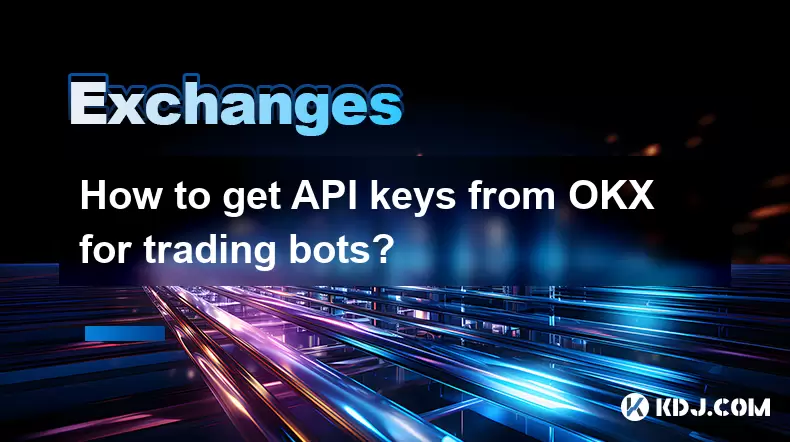
How to get API keys from OKX for trading bots?
Jul 03,2025 at 07:07am
Understanding API Keys on OKXTo interact with the OKX exchange programmatically, especially for building or running trading bots, you need to obtain an API key. An API (Application Programming Interface) key acts as a secure token that allows your bot to communicate with the exchange's servers. On OKX, these keys come with customizable permissions such ...
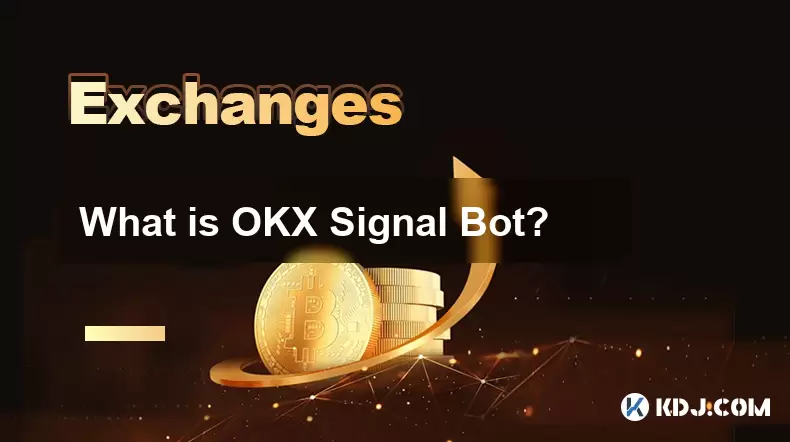
What is OKX Signal Bot?
Jul 02,2025 at 11:01pm
Understanding the Basics of OKX Signal BotThe OKX Signal Bot is a feature within the OKX ecosystem that provides users with automated trading signals and execution capabilities. Designed for both novice and experienced traders, this bot helps identify potential trading opportunities by analyzing market trends, technical indicators, and historical data. ...
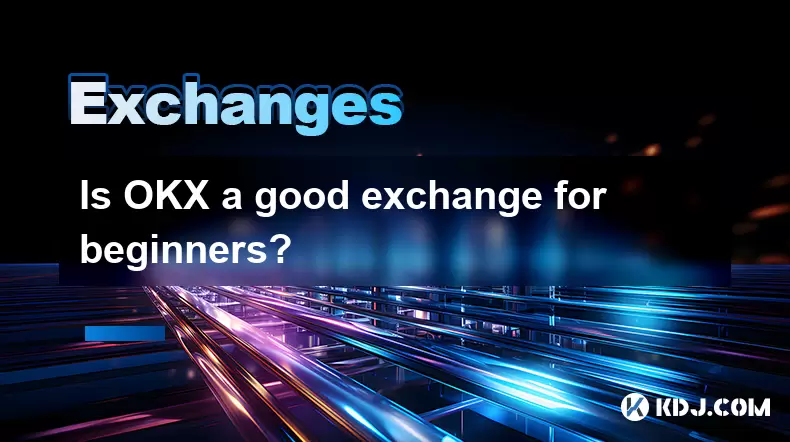
Is OKX a good exchange for beginners?
Jul 03,2025 at 05:00pm
What Is OKX and Why Is It Popular?OKX is one of the leading cryptocurrency exchanges globally, known for its robust trading infrastructure and a wide variety of digital assets available for trading. It supports over 300 cryptocurrencies, including major ones like Bitcoin (BTC), Ethereum (ETH), and Solana (SOL). The platform has gained popularity not onl...
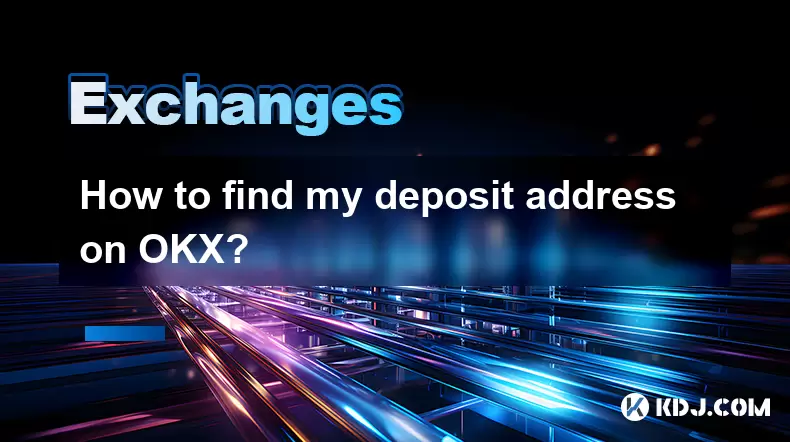
How to find my deposit address on OKX?
Jul 06,2025 at 02:28am
What is a Deposit Address on OKX?A deposit address on OKX is a unique alphanumeric identifier that allows users to receive cryptocurrencies into their OKX wallet. Each cryptocurrency has its own distinct deposit address, and using the correct one is crucial to ensure funds are received properly. If you're looking to transfer digital assets from another ...
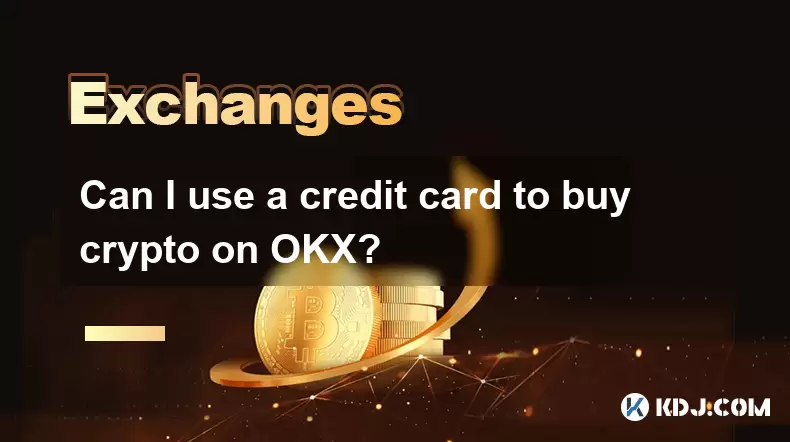
Can I use a credit card to buy crypto on OKX?
Jul 04,2025 at 04:28am
Understanding OKX and Credit Card PaymentsOKX is one of the leading cryptocurrency exchanges globally, offering a wide range of services including spot trading, derivatives, staking, and more. Users often wonder whether they can use a credit card to buy crypto on OKX, especially if they are new to the platform or looking for quick ways to enter the mark...
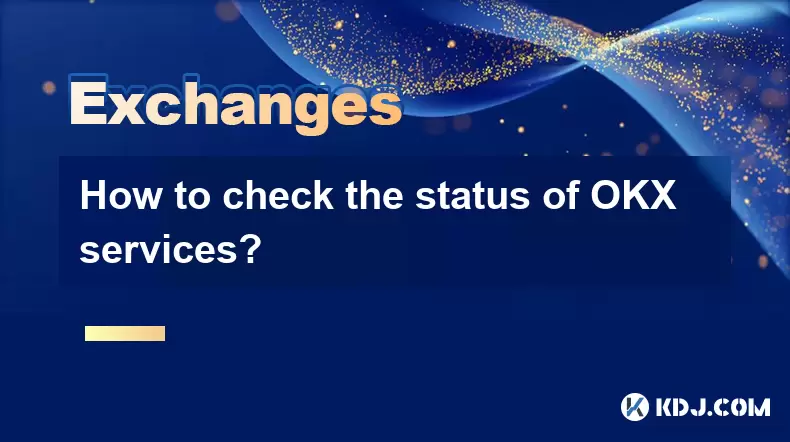
How to check the status of OKX services?
Jul 02,2025 at 11:14pm
What is OKX, and Why Checking Service Status Matters?OKX is one of the world’s leading cryptocurrency exchanges, offering services such as spot trading, futures trading, staking, and more. With millions of users relying on its platform for daily transactions, it's crucial to know how to check the status of OKX services. Downtime or maintenance can affec...

How to get API keys from OKX for trading bots?
Jul 03,2025 at 07:07am
Understanding API Keys on OKXTo interact with the OKX exchange programmatically, especially for building or running trading bots, you need to obtain an API key. An API (Application Programming Interface) key acts as a secure token that allows your bot to communicate with the exchange's servers. On OKX, these keys come with customizable permissions such ...

What is OKX Signal Bot?
Jul 02,2025 at 11:01pm
Understanding the Basics of OKX Signal BotThe OKX Signal Bot is a feature within the OKX ecosystem that provides users with automated trading signals and execution capabilities. Designed for both novice and experienced traders, this bot helps identify potential trading opportunities by analyzing market trends, technical indicators, and historical data. ...

Is OKX a good exchange for beginners?
Jul 03,2025 at 05:00pm
What Is OKX and Why Is It Popular?OKX is one of the leading cryptocurrency exchanges globally, known for its robust trading infrastructure and a wide variety of digital assets available for trading. It supports over 300 cryptocurrencies, including major ones like Bitcoin (BTC), Ethereum (ETH), and Solana (SOL). The platform has gained popularity not onl...

How to find my deposit address on OKX?
Jul 06,2025 at 02:28am
What is a Deposit Address on OKX?A deposit address on OKX is a unique alphanumeric identifier that allows users to receive cryptocurrencies into their OKX wallet. Each cryptocurrency has its own distinct deposit address, and using the correct one is crucial to ensure funds are received properly. If you're looking to transfer digital assets from another ...

Can I use a credit card to buy crypto on OKX?
Jul 04,2025 at 04:28am
Understanding OKX and Credit Card PaymentsOKX is one of the leading cryptocurrency exchanges globally, offering a wide range of services including spot trading, derivatives, staking, and more. Users often wonder whether they can use a credit card to buy crypto on OKX, especially if they are new to the platform or looking for quick ways to enter the mark...

How to check the status of OKX services?
Jul 02,2025 at 11:14pm
What is OKX, and Why Checking Service Status Matters?OKX is one of the world’s leading cryptocurrency exchanges, offering services such as spot trading, futures trading, staking, and more. With millions of users relying on its platform for daily transactions, it's crucial to know how to check the status of OKX services. Downtime or maintenance can affec...
See all articles





















